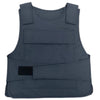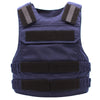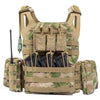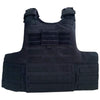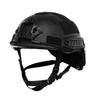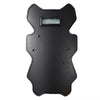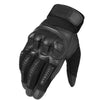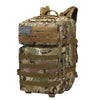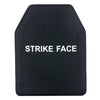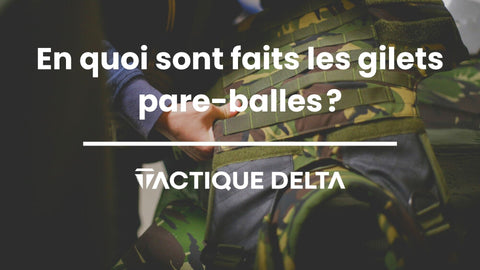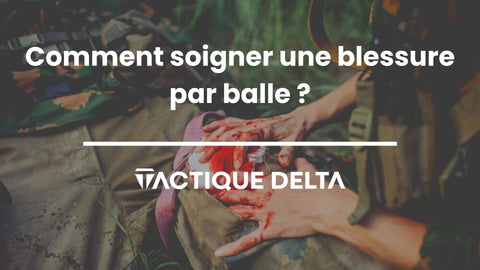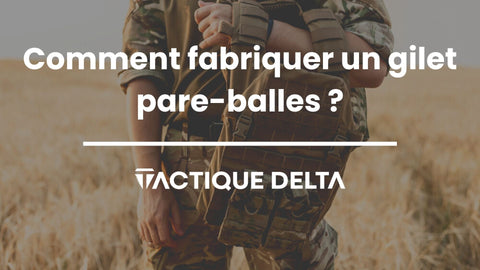
How to make a bulletproof vest?
7 min of reading
Do you find it fascinating that a bulletproof vest can stop a burst of projectiles, and would you be curious to know how this equipment is made?
As their name suggests, bulletproof vests are armor specially designed to protect those who wear them from bullets and other deadly projectiles, particularly at vital points .
These vests are generally used by several state institutions, such as the Police, military forces, customs, etc. They are also used in the private sector, such as with banks and security agencies. That said, not all of these institutions have access to the same types of bulletproof vests. In fact, the manufacturing of these varies depending on needs. In this article, you will discover:
- Everything you need to know about bulletproof vests and their history
- How are bulletproof vests made?
- How is the quality control of bulletproof vests carried out?
Let's get started without further ado!
The essentials on the history of bulletproof vests
Unsurprisingly, the battle between weapon and protection continues to this day. Since the creation of the first weapon, it has become urgent for fighters to find equipment that can protect them from different projectiles, in all civilizations.
Armor before bulletproof vests
The Greeks and Persians used linen in making their armor, while the Macedonians used coconut leaves to make it, until the 19th century. In China, armor was made from animal skins, including rhinoceros skin. Native Americans, on the other hand, used several hides from a variety of animals to create their armor.
Armor which is made of iron, brass, and steel dates back to 4 centuries BC. The very first were created in Ukraine, and more particularly in kyiv. The Roman Empire used mail to protect its troops. That said, brigandine armor , which so far comes closest to some body armor today, was used primarily throughout Europe, beginning in the 14th century AD. Eastern countries, for their part, rather used breastplates, which were certainly more effective against their own weapons.
Therefore, we can already conclude that the effectiveness of an armor depends above all on the weapons with which it is confronted.
The Evolution of Bulletproof Vests
With the advent of firearms, the need to create even stronger protections became an increasing priority. At first, armorers attempted to counter the power of bullets by making armor thicker and adding a second layer. Unfortunately, this approach was quickly abandoned, because the armor had become much too heavy and its protection was insufficient against military weapons.
Despite initial failures, the innovations persisted and were particularly supported during the two world wars. However, they only began to bear fruit in the early 1940s, with the appearance of the first conventional bulletproof vests. Of course, it was the military who started using them en masse, then it was the turn of the police. The first versions were made of Ballistic Nylon . The vests contained ceramic, titanium, steel, and fiberglass plates. The nylon allowed all the elements included in the vest to hold in place. This therefore allowed them to offer better protection to the most sensitive areas of the body, including vital points.
In 1965, scientists discovered Kevlar. This material was significantly stiffer than steel and was considerably lighter. While Kevlar was initially designed for use in different sectors of heavy industry, the interest in its use in bulletproof vests was obvious. So it didn't take long for the first protective Kevlar jackets to appear.
In the early 1970s, Kevlar body armor began to be used by various state institutions around the world. It only took them a few years to completely replace the old nylon vests so that Kevlar became an essential material in the design of bulletproof vests.
In 1989, the American company ASC created the Spectra. This material allows the creation of bulletproof vests that are both lighter and more resistant. However, Spectra is not always a substitute for Kevlar, but is generally used as a complementary material.
The secrets of making bulletproof vests
Although it can be put together by individuals, manufacturing a bulletproof vest requires in-depth technical knowledge and mastery of sewing. Here, we present to you the essential steps you need to know in order to make a real bulletproof vest.
The constitution of the bulletproof vest
A bulletproof vest is basically a polymer jacket, which contains a series of Kevlar and/or Spectra plates. Vests made in most Eastern countries are made of the same materials, but instead of Kevlar and Spectra plates, they are made of Twaron and Bynema plates . Kevlar protective jackets are sewn with Kevlar threads, and Spectra ones are glued with special resin, such as Kraton. Then, these are covered with a layer of polyethylene.
As you will have understood, the more plates the vest has, the more it will be able to protect you. However, if you use plates to cover non-vital parts, such as the legs, you risk losing mobility. Additionally, it is important to note that certain materials are better suited to covering specific areas of the body. Thus, it is best to use Kumax to cover both sides of the torso, for its ability to absorb shock . A bulletproof vest may also have nylon padding, for additional lightweight protection, which can resist stabs and other bladed weapons.
Regarding bulletproof vests designed for dangerous missions (military or intervention), it is not uncommon to see agents use additional pockets which can contain steel or fiberglass plates . Since these vests are able to cover more surface area, these plates will be better able to protect against grenade fragments. It is also possible to use a variety of tools to attach these protective jackets, such as elastic laces or rubber straps, hook-and-loop fasteners or metal straps.
The process of making bulletproof vest
While it is entirely possible to order a custom-made bulletproof vest, meeting the buyer's requirements, most vests that exist on the market are manufactured in standard shapes. The latter comply with the conditions of the regulatory bodies and they always provide a good level of protection . However, it is difficult to find them on the retail market, as body armor is mostly sold in bulk, to larger customers.
Manufacturing of the ballistic panel
To make a Kevlar bulletproof vest, it is essential that poly para-phenylene terephthalamide be created in the laboratory. Indeed, this process is called polymerization, where molecular combination results in the creation of long chains. Thus, the crystalline liquid obtained is extracted in a metal tray covered with holes, to finally obtain the kevlar. Then, the Kevlar fiber is cooled in a container specially designed for this use. Then, the latter is washed with water and rolled into a roll. After that, the fiber is sent to other premises for weaving and making the aramid fabric, finally obtaining a ballistic Kevlar panel .
Unlike the Kevlar panel, the ballistic panel is never sewn to the fabric of the body armor. Instead, polyethylene filaments, which are at least as strong, are used to create fibers that are placed next to each other. Everything is then covered with resin to obtain a Spectra plate. It is important to note that, for optimal safety, two Spectra plates must be placed, which are then placed between two layers of polyethylene. Only after this process, the part required in creating the body armor is cut out and then taken.
Cutting the ballistic panel
At this level, the Kevlar fabric is sent to the manufacturer in roll form. There, the Kevlar is unrolled and is then cut into the shape of several panels. The size of the cutoff varies depending on the size of the bulletproof vests that the manufacturer plans to produce. That said, the thickness depends above all on the level of protection desired.
Since Kevlar is an expensive material to produce, manufacturers use several techniques to ensure that the cutting results in as many panels as possible. Among the most sophisticated methods, we find where producers use machines equipped with laser detectors and which are manipulated by artificial intelligence that can determine an optimal cutting pattern.
Finally, specialized workers use electric saws with 15-centimeter-wide cutting wheels to cut the panels. These are finally placed in piles and sent to the sewing rooms.
Sewing the ballistic panel
As noted above, Spectra ballistic panels do not need to be sewn. In fact, the latter are placed in tight pockets which completely prevent them from moving. On the other hand, those of Kevlar bulletproof vests must be sewn to stay in position. Additionally, the sewing process is rather complex. It therefore requires a certain amount of know-how for those who wish to make their own bulletproof vests.
To sew the different parts of the protective jacket, it is always better to place a stencil on the fabric. This technique allows the worker to draw the lines to be sewn, thus making the task considerably easier.
The finishing of the bulletproof vest
In general, when manufacturing a new body armor, it must include a minimum of 8 plates sewn conventionally or using industrial tools. The plates must be well placed in their pockets and the various accessories must also be correctly placed. Only after these checks do the jackets go through quality control.
Quality control of bulletproof vest
Bulletproof vests undergo several tests once they are manufactured. The fiber manufacturer carries out strength tests and carries out specific tests to check the resistance of the sewing threads as well as that of the fabric. The Spectra also undergoes rigorous testing to verify its strength and reliability in the field. Manufacturers of body armor even hire experts who can detect failures even after the jackets are produced.
That said, unlike standard clothing, bulletproof vests must be checked according to the standards imposed by the regulatory bodies of each country. Since not all bulletproof vests meet the same criteria, it often happens that countries cancel the purchase of protective vests due to their non-compliance with certain regulations.
For this reason, some countries impose a second quality control on the arrival of new bulletproof vests. However, in order to avoid unnecessary losses, the vests pass a preliminary quality control test. This allows the manufacturer to create a sample in order to pass the final test. If the latter is accepted, the manufacturer can start production of the ordered quantity.
Also note that body armor is tested dry and wet. This is because the fibers may affect the effectiveness of the jacket when it becomes humid.
Even their homemade manufacture is technically possible, bulletproof vests are equipment whose manufacturing process remains quite complex. That said, now that you know the essential steps in making them, you are free to get started. Moreover, it is entirely possible to buy the most difficult components to make, and do the rest yourself.
If you give up making your own bulletproof vest, then don't hesitate to take a look at our online store, Tactic Delta where you will find numerous collections of combat equipment, such as Bulletproof Vests , Bulletproof Vest Covers , a French Military Bulletproof Vest and many more!

